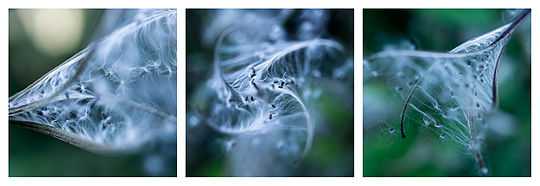Epilobium hirsutum
| Epilobium hirsutum | |
|---|---|
 | |
| Scientific classification | |
| Kingdom: | Plantae |
| (unranked): | Angiosperms |
| (unranked): | Eudicots |
| (unranked): | Rosids |
| Order: | Myrtales |
| Family: | Onagraceae |
| Genus: | Epilobium |
| Species: | E. hirsutum |
| Binomial name | |
| Epilobium hirsutum L. | |
| Synonyms[1] | |
| |
Epilobium hirsutum is a flowering plant belonging to the willowherb genus Epilobium in the family Onagraceae. It is commonly known as the great willowherb, great hairy willowherb or hairy willowherb. Local names include codlins-and-cream, apple-pie and cherry-pie.

Description
It is a tall, perennial plant, reaching up to 2 metres in height. The robust stems are branched and have numerous hairs.[2] The hairy leaves are 2–12 cm long and 0.5-3.5 cm wide. They are long and thin and are widest below the middle. They have sharply toothed edges and no stalk. The large flowers have four notched petals. These are purple-pink and are usually 10–16 mm long. The stigma is white and has four lobes. The sepals are green.
Distribution
The native range of the species includes North Africa, most of Europe up to South of Sweden,[3] and parts of Asia. It is absent from much of Scandinavia and north-west Scotland. It has been introduced to North America and Australia. It typically grows in wet or damp habitats without dense tree-cover up to 2,500 metres above sea-level. Common habitats include marshland, ditches and the banks of rivers and streams. It flowers from June to September, with a peak in July and August. The flowers are normally pollinated by bees and hoverflies. A number of insects feed on the leaves including the elephant hawkmoth, Deilephila elpenor.
Ecology
Damp and waste places, river-sides and ditches.[4]

References
- ↑ "The Plant List: A Working List of All Plant Species". Retrieved 20 November 2014.
- ↑ Martin, K. 1965. The New Concise British Flora in Colour; with nomenclature edited and revised by Douglas H. Kent and foreword by The Duke of Edinburgh. London: Book Club Associates by arrangement with Ebury Press/ Michael Joseph (1982)
- ↑ "Epilobium hirsutum , Sverige". linnaeus.nrm.se. Retrieved November 2014.
- ↑ Webb, D,A., Parnell, J. and Doogue, D. 1996. An Irish Flora. Dundalgan Press (W.Tempest) Ltd. Dundalk. ISBN 0-85221-131-7
| Wikimedia Commons has media related to Epilobium hirsutum. |
- Blamey, Marjorie & Grey-Wilson, Christopher (2003) Cassell's Wild Flowers of Britain and Northern Europe, Cassell, London.
- Press, J. R.; Sutton, D. A. & Tebbs, B. M. (1981) Field Guide to the Wild Flowers of Britain, Readers Digest, London.
- Tutin, T. G. et al. (1968) Flora Europaea, Volume 2. Cambridge University Press. ISBN 0-521-06662-X
- Washington State Department of Ecology (2006) Non-native Freshwater Plants: Hairy Willow-Herb. Accessed 2007-10-25.